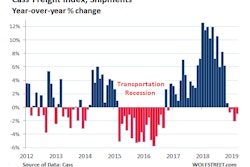Several years ago, I stumbled upon the subject of behavioral economics when I made an online search for the phrase what was I thinking? Behavioral economics is the study of our financial decision-making processes. What’s caught my eye reading more about it is the high degree of irrational behaviors we all are guilty of. With the influence of social media, it’s getting more and more prevalent — about any day of the week you can experience a social-media dumpster fire and its pernicious influence.
In the last couple of weeks, the subjects of high freight rates (one broker was quoted recently calling it carrier “price gouging”), as well as concurrent predictions of a freight-rate crash, have saturated internet groups.
I posed questions related to these subjects in an owner-operator mentoring group I engage routinely. I wanted to know if people could articulate how they selected their loads, and if they thought we were at risk of “price gouging” our customers.
Most of these owner-operators don’t believe it’s even possible to “price gouge” during a rate negotiation. This may be true if both parties have the right of refusal. The caveat in the responses is that every single person noted they were much less likely to try to pursue an exorbitantly high price when dealing with a customer/broker they’ve dealt with positively in the past.
Most, too, suggested they were as concerned with repeat-business consistency as with rates.
And when it comes to pricing, ultimately, there is an old saying: “One man’s ceiling is another’s floor.” Developing a consistent “pricing formula” may prove to be of great benefit to you.
Understand “price anchoring” to get yourself started. That’s basically a term to describe the development of preconceived ideas of what a normal price for something is. Many owner-operators believe the price per mile should equal the per-gallon cost of fuel. This is an example of price anchoring. Others say their goal is $1,000 gross for the day. Another example. But assuming profit springs eternal from an anchor price can be risky business.








